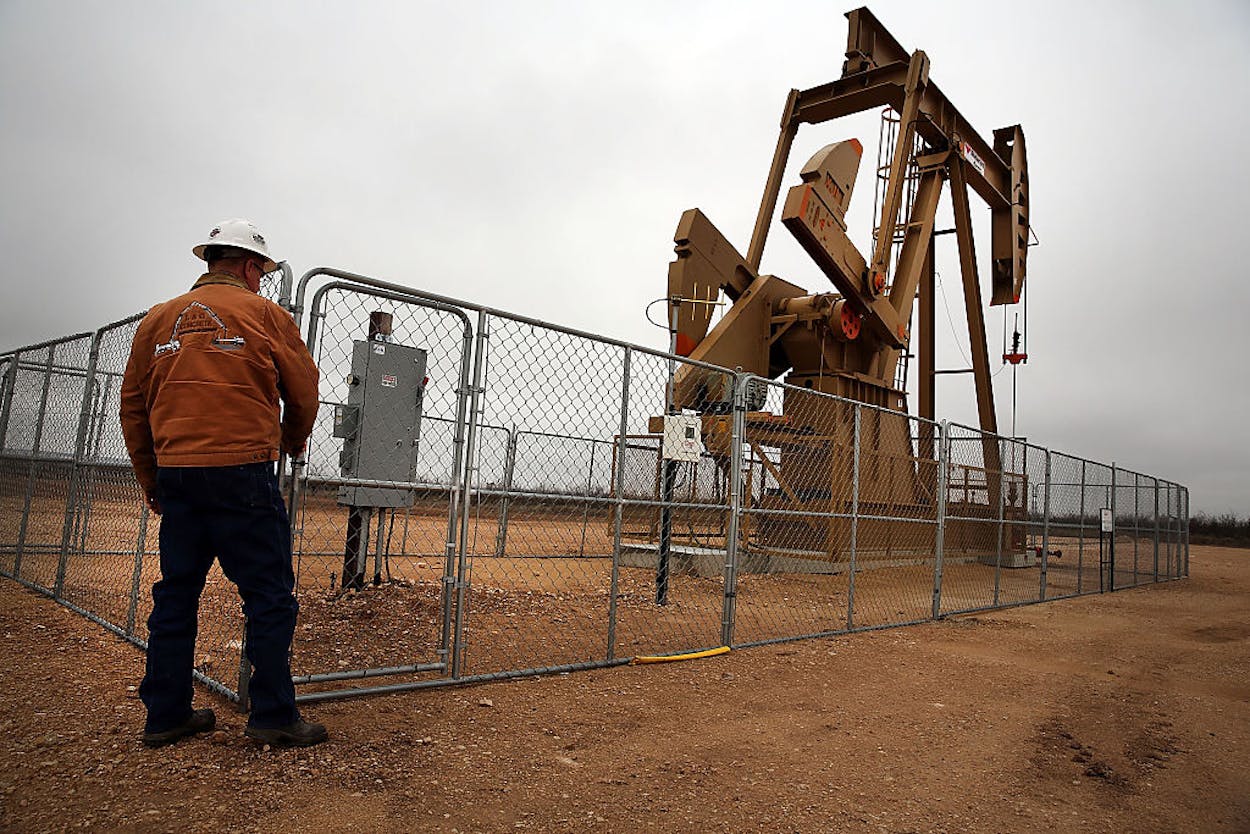In 2016, the daily average oil production in Texas was near the highest rate it had been since the late seventies. There were nearly 179,000 wells producing a daily average of 2,663 Mbbls a day. Things were down slightly compared to the numbers of 2015, but the 3 percent dip was still better than in any other year of the post-2012 boom.
That level of energy production can be a double-edged sword. It’s good for the state’s economy, at least in the short- and medium-term, and good for the pocketbooks of consumers whose habits fuel the demand for oil—but the environmental impact of that kind of production is often troubling. However, a study from E&E News, which monitors energy and the environment, determined that even amid all that production, the number of oil spills in Texas (and the rest of the U.S.) actually fell dramatically.
The number of spills and other mishaps at oil and gas sites fell sharply again last year, in line with decreased drilling.
An E&E News review of spill records indicates that spills declined about 17 percent during 2016 compared to the previous year.
Oil field activity, as measured by the Baker Hughes Rig Count, fell about 15 percent. Oil and gas production also declined, but not as steeply.
Those numbers are significant, if somewhat proportional, on a national level. A 17 percent decline in spills along with a 15 percent drop in activity is encouraging, if not necessarily unexpected. But when you look at the numbers in Texas, those statistics become more eye-popping. Here, the drop was a whopping 26 percent over 2015, while production declined only 3 percent in that same time period. The number of spills in Texas (a still-not-great 2,069) was the lowest the state had seen since 2012, when there were 1,965 spills and the state produced only a little more than half as much oil.
So what accounts for the reduced number of accidents? The Texas Railroad Commission would like you to know that the answer is not reduced reporting requirements. “While the Railroad Commission doesn’t control the number of spills, we do have stringent requirements to prevent incidents and a thorough reporting, cleanup, and remediation process,” the commission’s Ryan Sitton told E&E News.
The actual reason is probably that the boom is a few years old now, and oil wells tend to have more accidents in their first three years of use than they do as they develop. According to a study published in February led by Lauren Patterson of Duke University’s Nicholas Institute for Environmental Policy Solutions, “75 to 94% of spills occurred within the first three years of well life when wells were drilled, completed, and had their largest production volumes.” The number of wells in Texas in 2013 was almost identical to the number in 2016, which suggests that much of the equipment had been in use long enough to have overcome the worst of those problems.
Another potential reason for the decline in the number of spills is that the per-well production in Texas is up dramatically. The per-well average of 14.88 bbl per day—the highest the state had seen since 1979 (and more than double the average production at the start of the decade)—means that there’s an incentive for owners to keep the wells in good shape.
All of which is to say that, while more than 2,000 spills a year in Texas is too many (it’s nearly five a day), the downward trend is encouraging, even as the production capacity goes up. As long as we’re living in an oil-fueled culture, those are numbers to find promising.
- More About:
- Energy








